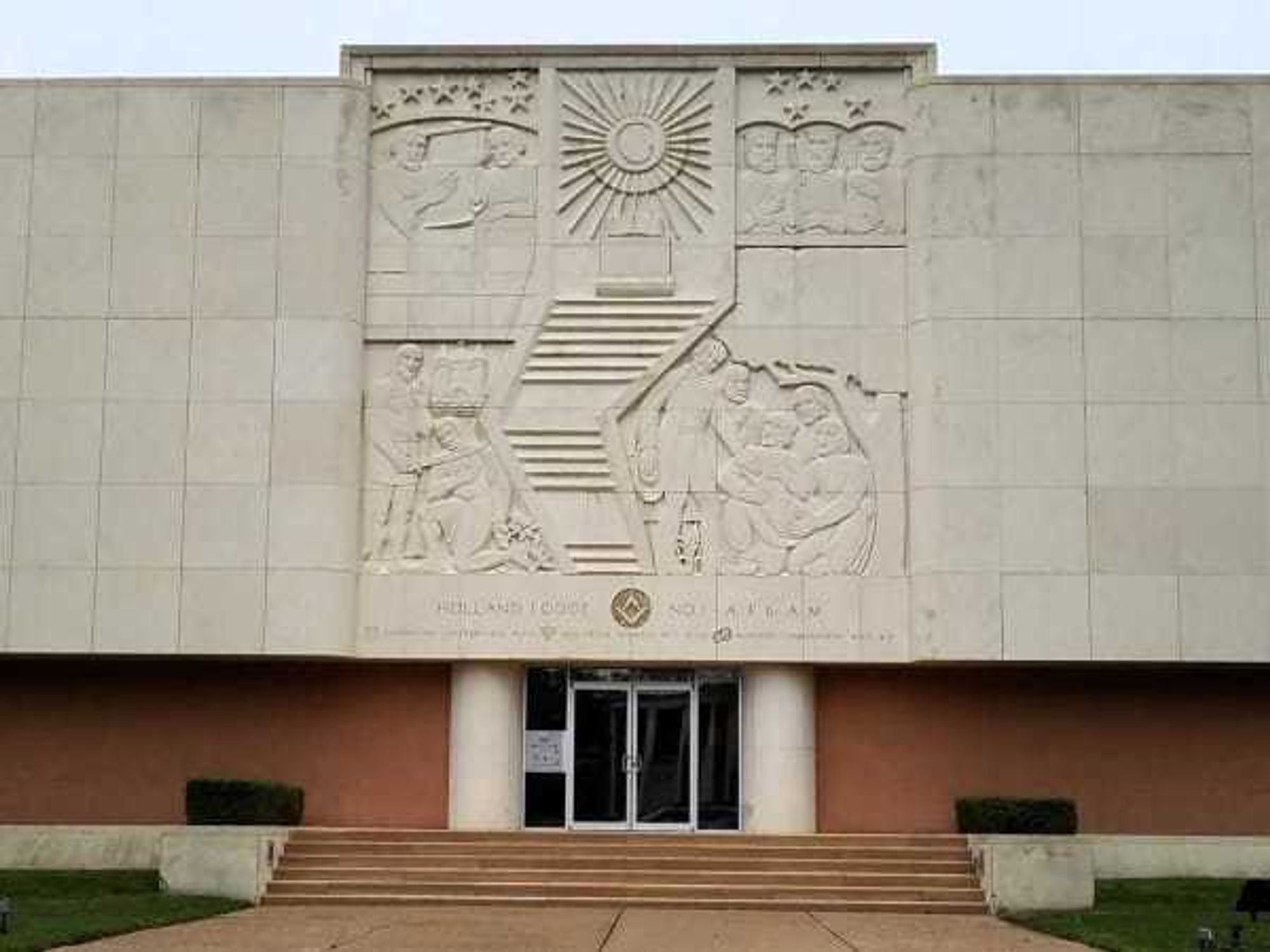Imagine Houston's Future
Can a Green Revolution transform Houston's future?
 A city of Houston electric vehicle
A city of Houston electric vehicle Solar powered container office created by University of Houston faculty
Solar powered container office created by University of Houston faculty City Hall Farmers MarketPhoto by Katya Horner/Slight Clutter Photography
City Hall Farmers MarketPhoto by Katya Horner/Slight Clutter Photography Mayor Annise Parker at the City Hall Victory Gardens
Mayor Annise Parker at the City Hall Victory Gardens
Innovation, creativity and a black gold rush spirit dominated Houston at the turn of the last century – putting Houston on the map as an economic leader. As one of the main driving forces of the Industrial Revolution, petroleum, in great demand, became the most valuable commodity traded on the world market.
Today, Houston is at an historic juncture. Decision-drivers for the city and the region are no longer only economic. There is an emerging recognition that the city has the building blocks to be one of the most livable, equitable and sustainable places in the nation, and lead the next revolution: The Green Revolution.
What are these building blocks?
Forbes Magazine placed Houston as the number one city for young professionals. And young professionals drive innovation and use new thinking to solve old issues. Houston has a business-friendly environment and a plethora of large companies. Houston also has high average incomes and a concentration of graduates from elite colleges from across the country. And the food is great!
In addition, Houston has an extremely fast-growing population. The Houston-Galveston Area Council has forecasted that the Houston region will grow by 3.5 million people in the next few decades. Houston has a unique opportunity to encourage growth, expand the economy, all while using less resources.
What’s most exciting about Houston is that few people think it will lead the Green Revolution. But this sleeping giant is starting to awaken. Houstonians love a good challenge, and love to save money.
At the turn of the last century, rich resources made Houston a national economic leader. At the turn of this century, rich resources will do the same. Texas has, by far, the largest installed wind power capacity of any U.S. state. The city of Houston capitalized on this and has been recognized by the EPA as the number one municipal purchaser of green power and the fourth largest overall purchaser in the nation. And Houston business leaders are at the forefront of building and expanding renewable infrastructure, so wind from Texas can be moved easier, faster and cheaper.
The city has a robust partnership with the University of Houston College of Architecture’s Green Building Components Program. Their innovative faculty has designed the first movable solar powered container office/generator, and the city, through a grant, is working on purchasing this technology for emergency preparedness and other uses.
These new resources and cutting-edge technologies are the first of the building blocks of Houston’s green future. Houston is poised to bring to the mass market and make affordable what others only dream of now: nano-solar PV cells (think solar-powered paint that generates energy), algae biofuel (ExxonMobil is looking at it), nuclear fusion power, high efficiency solar power, and carbon recapture and storage.
But in the future, Houston will not only create cleaner ways to use energy, Houston will actually use less energy. The city knows about energy efficiency: over 80 city facilities are expected to achieve guaranteed energy use reductions of 30% with paybacks of, on average, less than 10 years.
In the future, Houston can build and retrofit buildings with super smart lighting that practically talks to you, cool roofs, green roofs and energy efficient everything. On a hot day, you won’t be so cold in your office that you need to bring a sweater because the air conditioning will be set properly, saving money and energy.
And it’s not just energy efficiency, Houston embraces green buildings. Currently Houston is number eight in the nation in the number of LEED certified buildings (97 total). The Houston area ranks sixth on the EPA’s list of cities with the most Energy Star rated buildings (133 total) and second in the nation in square footage.
Houston can imagine a city with hundreds of green buildings. Mayor Annise Parker has imagined this, and she has created a goal to become number one in the nation in Energy Star and LEED certified building, and launched initiatives such as the Green Office Challenge and Energy Efficiency Incentive Program to help us get there.
The green revolution also includes diverting waste from the landfill. For the first time, the city of Houston’s recycling rate is closing in on 30 percent.
In the future, not only will every Houstonian have access to single-stream recycling, but Houston will approach zero waste, where all products are reused in some way. The private sector will be partners in zero waste, disclosing their diversions from the landfill in a friendly business competition, and supporting their customer’s desire to reuse.
The city will embrace best practices such as anaerobic digestion to reduce energy use and create renewable energy. Houston will embrace creative solutions such as gas plasma power, biochar fertilizer and technology that turns liquid sewage into drinking water (yes, it’s happening right now in other cities).
Leadership includes reducing toxic emissions. The air quality in Houston has improved, but it’s not good enough to just be better than Los Angeles, or to barely meet the ozone standards. Gone are the days where smog filled skies were badges of honor because it meant progress. More robust monitoring and stronger enforcement are key to future improved air quality and public health.
One of the most impressive pieces of the green revolution is the emphasis on public transportation and new transportation technologies. Soon, Houston will have three new rail lines (North, East End and Southeast lines), with others on the table. The city’s readiness for electric vehicles, with partners such as NRG launching the first private investment in EV infrastructure, is another building block. And we won’t have forgotten our history: compressed natural gas (CNG) is being considered for many closed-loop transit systems.
In the transportation future, Houston can grow its 7.5 miles of rail to hundreds of miles. Bus rapid transit can assist commuting Houstonians to and fro. Twenty percent of the vehicles on the road will be electric vehicles. Most shuttle systems will be powered by natural gas. And fleets will have a mix of hybrids, electric and CNG vehicles.
Biking will be embraced by Houstonians, and the infrastructure will match the demand. In addition to the robust off-road bike network that Houston has built, the average bicyclist will feel safe, as the infrastructure of bike boulevards, lanes, and traffic calming encourage safe biking. On-street bike sharing will be commonplace all over the city. Showers will exist in every building for bike commuters. And every Sunday in the spring and fall streets will be closed to vehicles for biking and pedestrians to stroll and enjoy.
And the city will expand is leadership in local food production with partners such as Urban Harvest – reducing truck transportation emissions as well as providing savings and health benefits to Houstonians. In the future, the city will have hundreds of vegetable gardens throughout Houston, robust and vibrant farmers markets with hundreds of vendors and access to fresh and local food in all of Houston’s food deserts.
John F. Kennedy once told the story of the great French Marshall Lyautey. “He once asked his gardener to plant a tree. The gardener objected that the tree was slow growing and would not reach maturity for 100 years. The Marshall replied, ‘In that case, there is no time to lose; plant it this afternoon!’”
We have already planted the tree, now let’s start watering it. The Green Revolution awaits leadership from Houston. Get excited!
Laura Spanjian is City of Houston sustainability director

 The building at 4911 will be torn down for the new greenspace. Holland Lodge No. 1, A.F. & A.M./Facebook
The building at 4911 will be torn down for the new greenspace. Holland Lodge No. 1, A.F. & A.M./Facebook